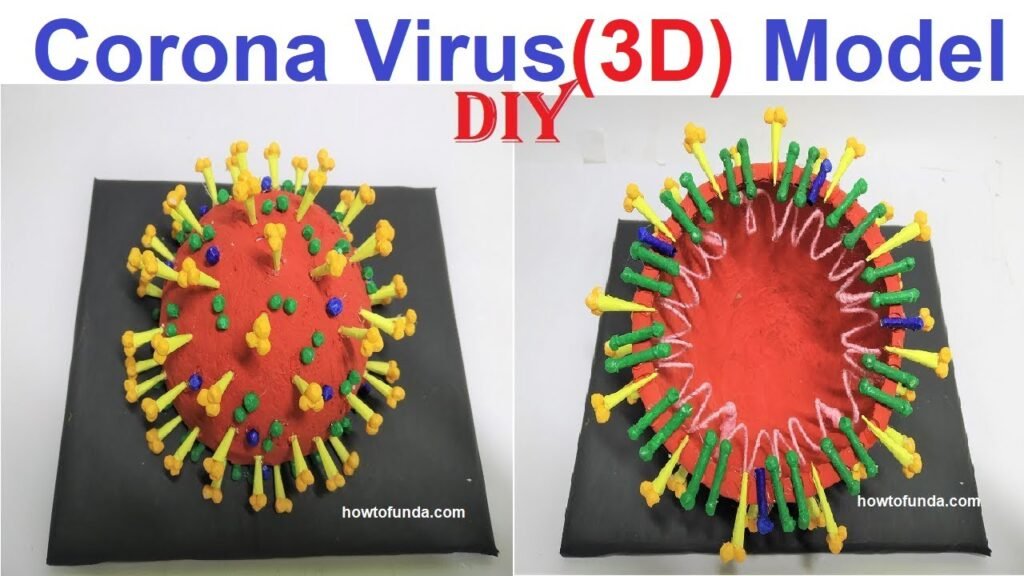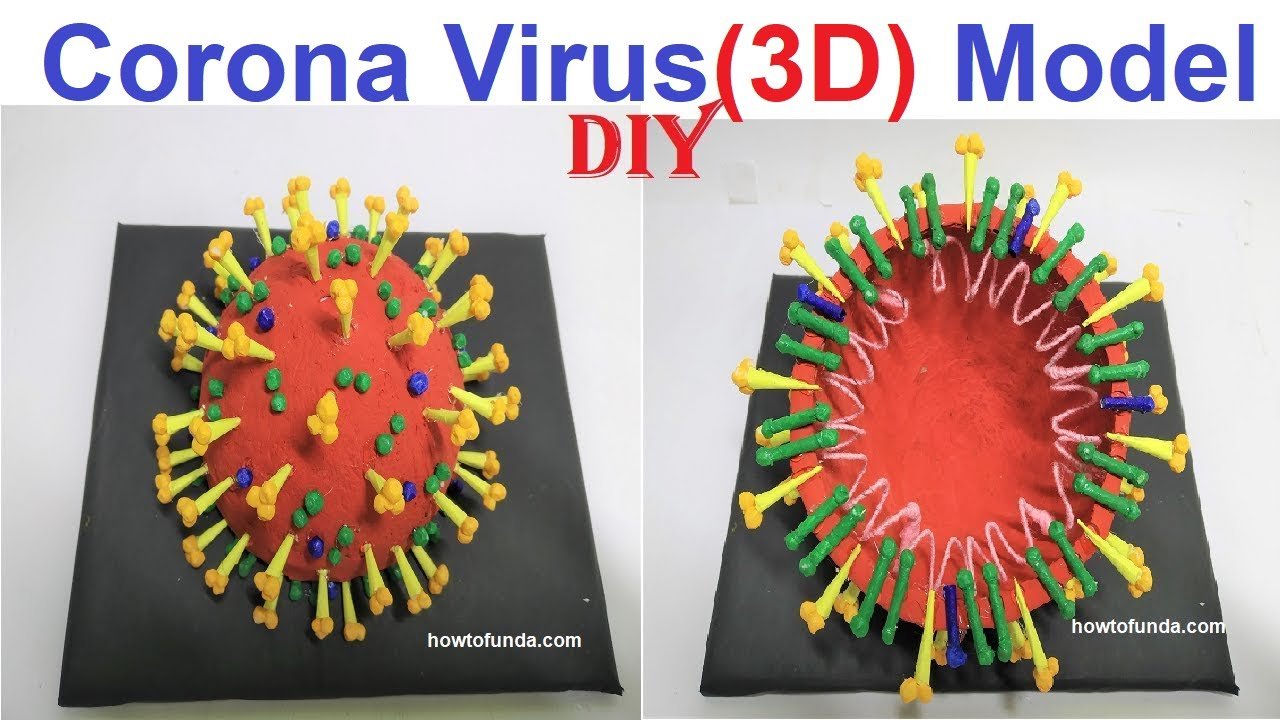Coronavirus is a word that describes a type of germ that can make people sick. It’s not a new word, but recently, a specific kind of coronavirus called COVID-19 has been in the news a lot.
COVID-19 is a type of sickness caused by a coronavirus called SARS-CoV-2. People might also just call it “the virus.” It spreads easily from person to person, which is why we need to be careful.

Imagine if someone with a cold sneezed, and tiny droplets from their nose flew into the air. If you were close to them, those droplets might land on you, and you could get sick too. COVID-19 spreads a bit like that, but it can also spread when people talk or breathe close to each other.
Creating a coronavirus model using coconut shell, cardboard, and colored paper
is a unique and eco-friendly way to represent the virus.

Follow these steps to make your model:
Materials Needed:
- Coconut shell (cleaned and dried)
- Cardboard (from packaging boxes)
- Colored paper or paints (preferably red, yellow, and white)
- Glue or adhesive
- Scissors
- Marker or pen
Steps:
- Prepare the Base:
- Take a piece of cardboard and cut out a circular shape to serve as the base for your model. This will be the platform on which you build the virus structure.
- Create the Main Body (Envelope):
- The coconut shell will serve as the main body of the virus. It already has a spherical shape, which is perfect for representing the envelope of the coronavirus. Ensure the coconut shell is cleaned and dried.
- Painting the Envelope:
- Paint the exterior of the coconut shell to represent the lipid bilayer of the viral envelope. Use shades of red and yellow. You can also add white highlights for details.
- Cut Out Spike Proteins:
- Use colored paper or paint to create the spike proteins. Cut out small triangular shapes from the colored paper and attach them onto the surface of the coconut shell. These spikes give the coronavirus its characteristic appearance.
- Add Internal Components (Optional):
- If you’d like to represent the genetic material (RNA) or other internal components, you can use colored paper or paints to create a small nucleus-like structure inside the coconut shell.
- Labeling (Optional):
- Use a marker or pen to label different parts of the model, such as the envelope and spike proteins.
- Attach to the Base:
- Apply glue or adhesive to the base of the coconut shell and attach it to the cardboard platform. Ensure it is securely fixed.
- Let it Dry:
- Allow the paint and glue to dry completely. This may take some time, so be patient.
- Display and Educate:
- Once the model is dry and secure, you can use it to explain the structure of the coronavirus. It’s an excellent educational tool to showcase the different components of the virus.
Remember to exercise caution while working with sharp objects like scissors and with adhesives. This model provides a creative representation of the coronavirus using natural and recycled materials.

